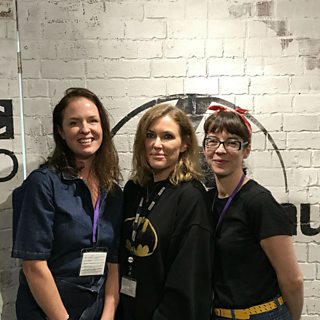(1847–1909)
The term ‘personal brand’ has become fashionable among inspirational speakers and entrepreneurs, along with the idea that we should all be blue-skying a new start-up every month and running our own digital empires by the time we’re twenty-five. Why do you need to have a brand if you’re not a toothpaste or a fast-food restaurant? The concept can be taken too far but there is some worth in taking some time to think about what you stand for. If you were asked to name the key values that were most important to you what would you say? In a digital world (unless you go completely off-grid and set up home in a tent of twigs with a tinfoil helmet, which is always an option), we all have some level of public persona – what you say on Twitter, what you post on YouTube, anything a Google search of your name throws up – all of this gives an impression of you to people who might be interested in you – from future employers to prospective dates doing a bit of background research.
Margarete Steiff built her own business and brand from the ground up, and both continue today as a testament to an entrepreneuse who passionately pursued the best, both for her own life and fulfilment and for the company she created, despite her difficult position as a disabled woman born in the nineteenth century.
Margarete was born in Giengen, the third of four children. When she was just a toddler she caught polio and was seriously ill for a long time. She recovered but her legs were paralysed and her right arm remained weak. This put her at the bottom of the pile in her neighbourhood where most of the jobs involved manual labour and her marriage prospects were unfairly diminished. However Margarete refused to be excluded from fulfilling her potential – her siblings pulled her to school in a cart where she excelled and made many friends, and she later moved on to a wheelchair. It was at school that she first learned needlework, which she took to with that magic mix of dedication and creativity. In 1862 her older sisters opened a tailor where she worked as a seamstress, and in 1874 her father converted a room at their house into a studio for her and she sewed clothes and other items with felt produced by her cousin’s business. She bought and modified a sewing machine so she could use it easily, fitted ramps to her home and began to sell what she made, creating her own financial independence and going on to employ a team of seamstresses.
In 1879 the seeds of Margarete’s exceptional success were planted when she spotted a pattern in a magazine for a stuffed toy elephant. Her first iterations of the propitious pachyderm were pincushions made out of leftover scraps but she also made a few to give as a toy to her nieces and nephews, to a delighted response. In 1880 she and her family set up the Steiff company and her brother began selling her elephants at a nearby market. By 1890 business was booming and soon after the first Steiff catalogue was released, with its brand statement of ‘Für Kinder ist nur das Beste gut genug’, advertising stuffed camels, pigs, dogs, cats and giraffes as well as the famous elephant. The Steiffs began to sell the toys all over the country and, far ahead of her time in terms of inclusion, diversity and flexible working, Margarete employed a team of female colleagues, many working from home.
When Margarete’s favourite nephew, Richard, joined the company he brought new ideas and in 1902 he came up with the romantically named ‘Bear 55PB’. This was the first teddy bear in the world with moveable arms and legs made of plush, which quickly caught on in the USA and began to be imitated everywhere because of its popularity. To counteract this the Steiff company came up with the idea of attaching a button of authenticity to the ear of all their toys. Even when the company expanded Margarete still put together the samples of new toys so she could check they were good enough. She won the Grand Prix at the World Exhibition in St Louis for her entrepreneurism. In 1907 the company made 1,700,000 toys.
In 1909 Margarete contracted a lung infection and died but the company she founded went from strength to strength and continues to sell high-quality stuffed toys today. You might think considering your own reputation and personality – after all, that’s all a brand is - seems a bit cynical and corporate for an individual, but at many points in your life you’ll find it useful to know what’s most important to you: particularly when choosing your career, your partners or your course of action when confronted by tricky emotional problems. Margarete and her company stood for hard work and high quality. So when you’re thinking about what you believe in, and how you want to communicate this, bear the magnificent Margarete in mind and get your personal brand all sewn up.























